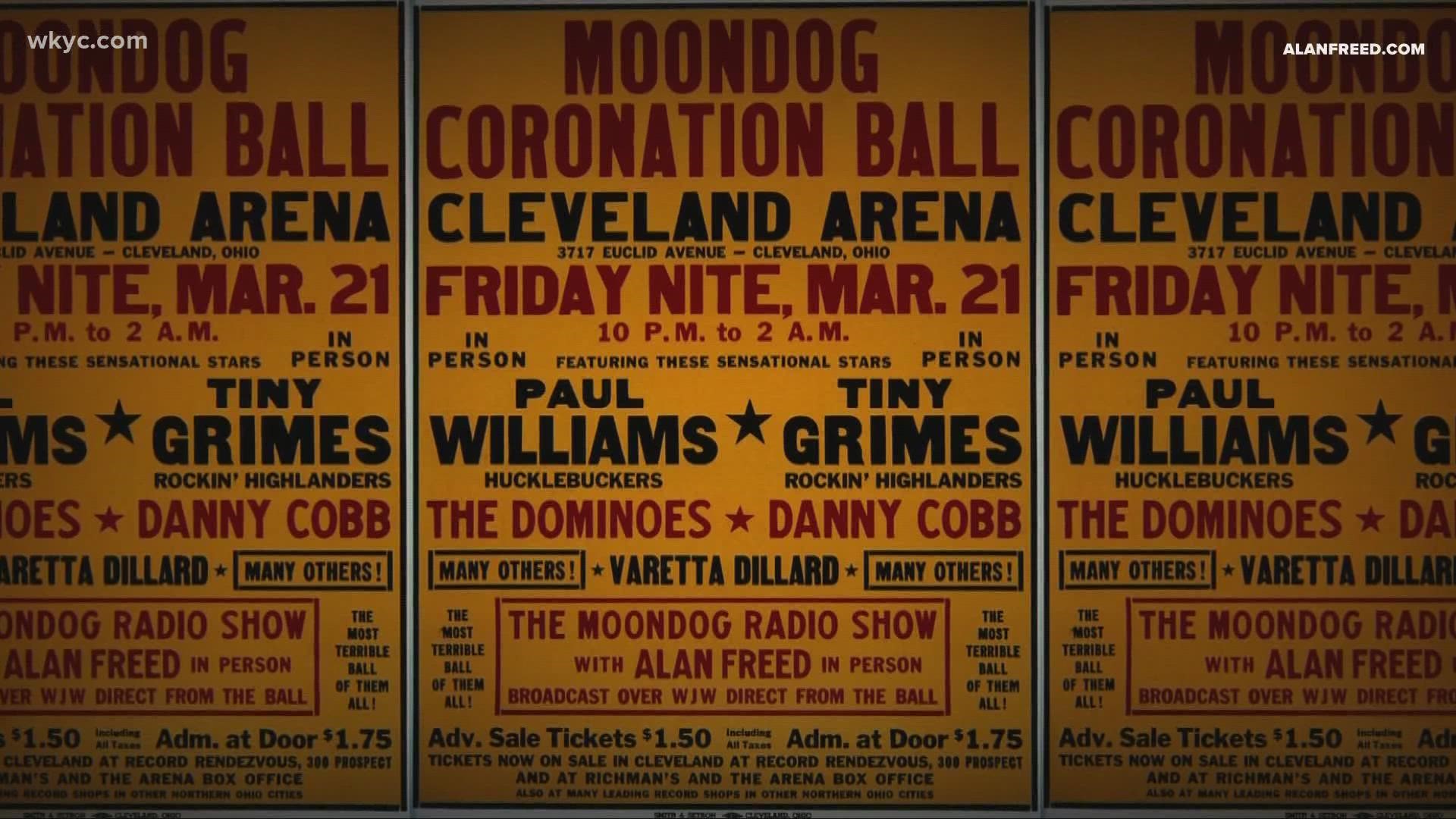CLEVELAND — Who would have thought that a rock and roll show that spiraled into a riot decades ago would have helped set the stage for Cleveland becoming the city for the Rock and Roll Hall of Fame and Museum?
Get into my time machine and let's go back to the early 1950s radio music show hosted by the disc jockey Alan Freed. He was a Cleveland on-air personality who was the first to take Black rhythm and blues music and introduce it on a far larger scale to white kids itching to hear more of it.
This was during times when Black music artists weren't allowed to cross over to white-run radio stations. That is, until Alan Freed and his Cleveland show — "The Moondog Rock and Roll House Party."
ROCK HALL INDUCTIONS: Everything you need to know about the 2021 event
In the industry, the Black rhythm and blues were called "race music. There was no cross-over until Freed crossed over, playing the rhythm and blues for his station's white teenagers. He introduced to them what he called "rock and roll."
I was too young to understand fully what was going on, but my parents, aunts and uncles partied to Alan Freed's "Moondog Show.'" They turned the radio dial to Alan Freed spinnin' records, "rhythm and blues" and "rock and roll"
Freed's Cleveland radio microphone screamed change in the air. Rock and roll caught fire, with its rhythm and blues sound exploding to a bigger audience. Freed called himself "King of the Moondoggers," and in 1952 promoted what would be the world's first live rock and roll show with headline acts.
Two-thousand tickets were sold for the Moondog Coronation Ball at the old Cleveland Arena. The night of the show, no one had even heard of a "rock concert," but there was a problem: There were counterfeit tickets.
The arena could handle up to 10,000, but when 20,000 finger-poppin teenagers showed up, they stormed the door.
Fights broke out. Cleveland cops rushed in to clear the arena and Euclid Avenue. It took hours to gain control, even after the Moondog Coronation Ball was shut down after the first song.
But the riot didn't shut down a growing music. Word got out, and Cleveland had a rock and roll rep.
So nearly 30 years later, when the Rock and Roll Hall of Fame Foundation in New York got the idea of a museum location, Cleveland jumped in. In this city, television, radio, and newspapers; city movers and shakers; and all ages of rock and rollers pushed for our city. USA Today sponsored a nationwide call-in vote, and Clevelanders voted in such numbers that, in 1986, the city was chosen.
There was a huge rock concert of major stars at old Cleveland Municipal Stadium to raise money and promote what was to come. Unlike the 1952 Moondog Coronation ball, this concert rocked without a riot.
When ground was broken for the Rock Hall in the 1990s, I covered the story on East 9th Street as I stood next to rock legend Chuck Berry, who was here for the groundbreaking. Later in 1995, when the Hall opened its doors, I was there, covering the grand opening of a museum made of concrete, steel, and glass, but mostly of rock.
So that's some history on how we got here, beginning with Alan Freed popularizing the old "rock and roll" as it was beginning its crossover from a rhythm to a new music. Even Freed's Moondog Coronation Ball-turned-riot played a part not only as the first major rock concert, but giving Cleveland a rockin' reputation.
All that set the stage for the entire world to catch the rhythm and the rhyme of what we hail as rock and roll music. Does Cleveland rock? You better know it.

